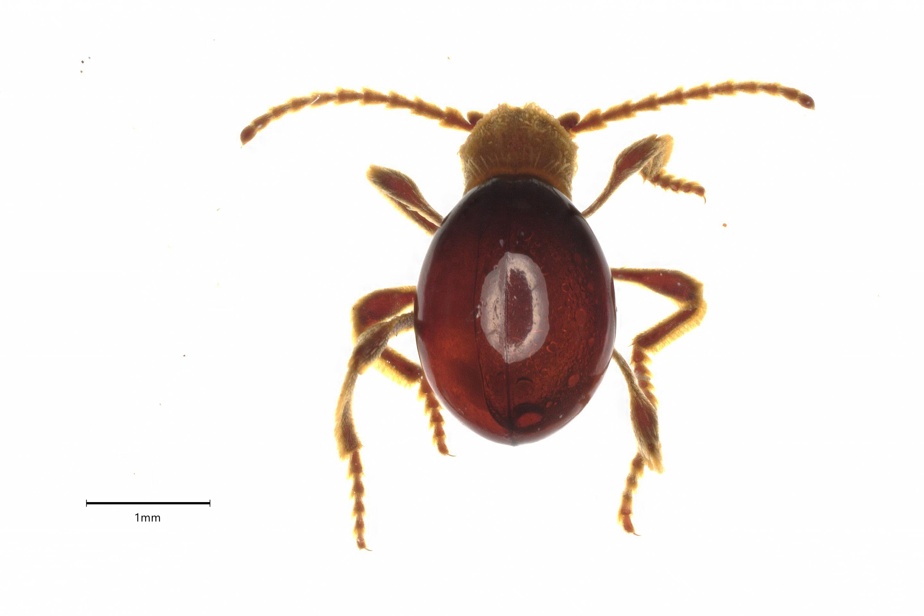Summer is back, camping, hiking in the forest. It’s also the return of ticks, especially the infamous black-legged tick, which can transmit Lyme disease. But don’t panic: not all the little dark bugs are ticks.
“In Quebec, there are very few arthropods that can transmit diseases or be truly dangerous,” says André-Philippe Drapeau Picard, entomological information officer and research agent at the Insectarium.
Arthropods are a large group that includes insects and arachnids. Ticks fall into the latter class.
But not all outdoor enthusiasts have a graduate degree in entomology: they may not be able to tell the difference between a shiny spider and a black-legged tick. And some are terrified of insects, arachnids, and arthropods: to them, anything small and with a large number of pairs of legs is seriously worrisome.
This is how people who participate in eTick, a platform for image identification and monitoring of tick populations, sometimes send photos of arthropods that have nothing to do with ticks.
André-Philippe Drapeau Picard became interested in the issue and teamed up with Jade Savage, creator of eTick and professor of biology at Bishop’s University, and Jeremie Bouffard, coordinator of the eTick project, to take a closer look and publish an article in the publication American Entomologist.
He thus realized that 8.8% of submissions to the eTick platform in Quebec between 2019 and 2023 concerned arthropods that were not ticks.
We were surprised by our results. The top 3 Of the species most often mistakenly identified as ticks, there are three beetles.
André-Philippe Drapeau Picard, entomological information officer and research agent at the Insectarium
-

PHOTO ANDRÉ-PHILIPPE DRAPEAU PICARD, PROVIDED BY THE INSECTARIUM
This Japanese beetle is not a tick.
-

PHOTO ANDRÉ-PHILIPPE DRAPEAU PICARD, PROVIDED BY THE INSECTARIUM
This otiorhynchus (a weevil) is not a tick either.
1/2
Now, beetles are insects, not arachnids like ticks. While the shiny spider beetle, the arthropod most often confused with a tick, may look a bit like one with a body not clearly divided between a thorax and a head and antennae that could pass for an extra pair of legs, this is not the case for two others, the Japanese beetle and the weevil.
However, it would be desirable to better identify ticks, if only to allow specialists who analyze the data submitted by citizens to spend more time on the case of real ticks.
It is also about reassuring citizens themselves. Anxiety about insects and arachnids can be distressing and prevent people from enjoying the great outdoors. It can also lead to reckless actions.

PHOTO ANDRÉ-PHILIPPE DRAPEAU PICARD AND JADE SAVAGE, PROVIDED BY THE INSECTARIUM
An example of an identification tool for the public
“It can have consequences that go beyond the individual,” says Drapeau Picard. “There are people who have accidentally set fire to their house while trying to destroy spider webs. There are people who use pesticides to remove insects and spiders from their property, which can have an impact on people’s health. And then, insects play ecological roles that we cannot do without, such as pollination.”
The research results will help to refine the identification tools offered to citizens.
“The main identification criteria are size, number of segments on the body, number of legs, presence of antennae [les tiques n’en ont pas]the coloring, lists Mr. Drapeau Picard. But the good reflex is always to take a photo, in order to compare it to other images and other indices that can be compared on the internet.
-

PHOTO ANDRÉ-PHILIPPE DRAPEAU PICARD, PROVIDED BY THE INSECTARIUM
This is a tick, the infamous blacklegged tick.
-

PHOTO ANDRÉ-PHILIPPE DRAPEAU PICARD, PROVIDED BY THE INSECTARIUM
This black-legged tick is engorged with blood.
1/2
He points out that only blacklegged ticks can transmit Lyme disease, and even then, not all of them are carriers. If a tick is, it will not transmit the disease if it is removed within 24 hours. If it is not removed in time, antibiotics can be taken as a preventative measure.
But the most important thing is to make sure you don’t get ticks. You have to develop good habits when you go for a walk in the forest, wear long clothes, and then inspect yourself when you get home.
André-Philippe Drapeau Picard, entomological information officer and research agent at the Insectarium
It is possible to apply mosquito repellent, but Mr. Drapeau Picard points out that these products end up in the environment, which is not without consequences.
And above all, we must stop fearing insects and arachnids.
“I think they deserve to be known,” he says. “When you start to take a little interest in them, a whole world of fascination and wonder opens up to you. Of course, a world in which everyone loves insects won’t happen, but if we can at least reduce anxiety, that would make me happy.”
Video suggestion
Adorable teddy bears
How many bear cubs are following mama bear in this video from Wisconsin?
Watch the full video
The number of the week
630
That’s the number of Class A provincial parks in British Columbia.
